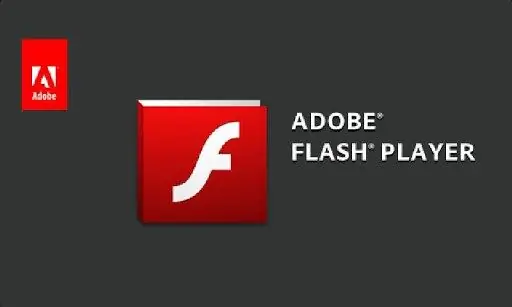Turning Adobe Flash Player on and off is different for different browsers. However, all modern versions of Internet browsers on Windows and Mac computers support this technology.

Instructions
Step 1
Internet Explorer
Call the main menu by clicking the "Start" button and go to the "All Programs" item. Start Internet Explorer version 7 and higher and open the Tools menu of the upper service bar of the application window. Point to Internet Options and select the Programs tab of the dialog box that opens.
Step 2
Use the Manage Add-ons button in the section of the same name at the bottom of the window and select the Shockwave Flash Object line in the opened directory of the next dialog box. Apply the checkbox in the Enable line of the Settings section and confirm the selected action by clicking the OK button.
Opera
Step 3
Launch your browser and open the general program settings menu by simultaneously pressing the Ctrl and F12 function keys in order to enable the downloaded and installed Flash Player. Please note that the player installation procedure implies the mandatory shutdown of all browsers, including Opera, for the correct integration of the application.
Step 4
Select the "Advanced" tab in the dialog box that opens and select the "Content" line in the list on the left side of the window. Apply the checkbox in the "Enable plugins" line and confirm the saving of the changes made by clicking the OK button. Restart your browser to apply the changes.
Step 5
Google chrome
Run the program and type chrome: plugins in the test field of the browser address bar. Find the field named Flash on the page that appears and click the Enable button below it.
Step 6
Please note that if there is an earlier version of the plugin, both files will be displayed in the directory, but the version included in the browser installation package will be used. Also do not use the experimental extension named pepflashplayer.dll, which also appears in the list.
Step 7
To install Flash Player in Microsoft Edge browser, first check if Flash Player is installed on your computer. If not, go to the Adobe Flash Player download page (https://get.adobe.com/flashplayer/?loc=ru) and download the program. Then enable Flash Player in Edge, making sure it is not already enabled. Open your browser and click on the> button. The browser menu will open. Select the "Options" section in it. In the list that appears, scroll down to the Advanced Options section and click the View Advanced Options button. In the window that opens, find the "Use Adobe Flash Player" section and move the toggle button to the "Enabled" position. Refresh the page or restart your browser to start using Flash Player features.
Step 8
Installing Flash Player in Firefox browser is different for MAC and Windows operating systems. If your computer is running MAC, open the Firefox browser, go to the Tools menu and open the Add-ons item. In the window that opens, select "Plug-ins". In the list of add-ons, find Shockwave Flash (called Flash Player for Mac) and check the status that appears to the right of the plug-in name. Set it to Always Activate and close the dialog box.
Step 9
For Windows, open the Firefox browser. Go to the settings menu and select the "Add-ons" section. Find Flash Player in the list of plug-ins and activate it.
Step 10
Please check the installed version number before installing Safari version on Mac. To do this, open your browser and select "About Safari". If you are using version 10.0 or later, follow these steps. Open the Safari browser, select "Safari" and go to the "Preferences" section. If Safari is open in full screen mode, hover your cursor over the top edge of your browser screen to see a menu. Click the Security tab and make sure Enable JavaScript, Allow Plug-ins are selected. Go to the plug-in settings and select Adobe Flash Player there. From the "When visiting other websites" menu, select "Enable" and click "Done". For each website listed in the Public Websites list, select Enable from the menu on the right.
Step 11
For Mac OS X 10.8, open the Safari browser and choose the Preferences menu. To find a menu in full screen mode, hover your cursor over the top edge of your browser screen. Click the Security tab. Make sure the "Enable JavaScript, Allow External Modules" options are enabled. Click on "Manage Website Settings". Select Adobe Flash Player in the window that opens. In the "When visiting other websites" menu, click on the "Allow" option.
Step 12
For Mac OS X 10.6 and 10.7, open the Safari browser and go to the Preferences menu. On the Security tab, verify that the Allow Java and Allow All Other Plug-ins options are enabled. Close the Preferences window. Flash Player is installed in Safari browser.
Step 13
To install Flash Player in Windows 10 Internet Explorer, go to the web page that contains the media object, open the tools menu in the upper right corner of the browser, select Manage Add-ons there, and select Shockwave Flash from the list that appears. Make sure the current website contains multimedia content. Otherwise, the Shockwave Flash object will not appear in the list. Click on the "Enable" button and then the "Close" button. If Flash Player still doesn't work, try turning off ActiveX filtering. To do this, open the page with multimedia content in Internet Explorer, select the "Tools" menu and go to the "Security" section, and then select "ActiveX Filtering". Close and reopen your browser and try checking the site's multimedia content again.






